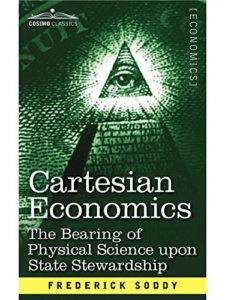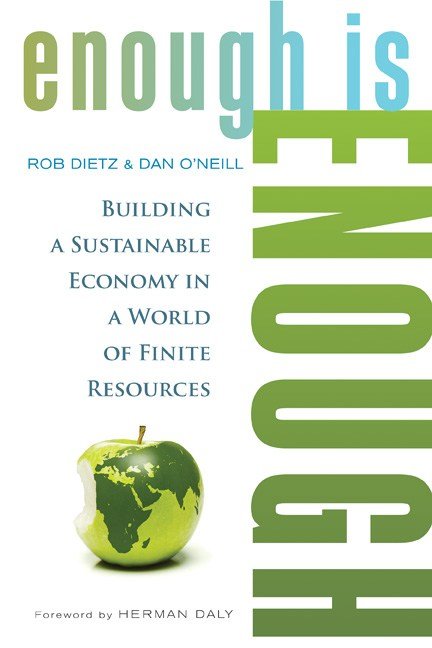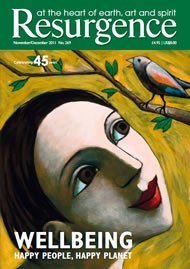Capital, Debt, and Alchemy
by Herman Daly
“Capital,” said Nobel chemist and pioneer ecological economist Frederick Soddy, “merely means unearned income divided by the rate of interest and multiplied by 100.”[1]
He further explained that “[a]lthough it may comfort the lender to think that his wealth still exists somewhere in the form of ‘capital,’ it has been or is being used up by the borrower either in consumption or investment, and no more than food or fuel can it be used again later. Rather it has become debt, an indent on future revenues. . .”[2]
In other words, capital in the financial sense is the perennial net revenue stream expected from the project financed, divided by the assumed rate of interest and multiplied by 100. Rather than magic growth-producing real stuff, it is a hypothetical calculation of the present value of a permanent lien on the future real production of the economy. The fact that the lien can be traded among individuals for real wealth in the present does not change the fact that it is still a lien against the future revenue of society—in a word it is a debt that the future must pay, no matter who owns it or how often it is traded as an asset in the present.
Soddy believed that the ruling passion of our age is to convert wealth into debt in order to derive a permanent future income from it—to convert wealth that perishes into debt that endures, debt that does not rot or rust costs nothing to maintain, and brings in perennial “unearned income,” as both IRS accountants and Marxists accurately call it. No individual could amass the physical requirements sufficient for maintenance during old age, for like manna it would spoil if accumulated much beyond current need. Therefore one must convert one’s non-storable current surplus into a lien on future revenue by letting others consume and invest one’s surplus now in exchange for the right to share in the expected future revenue. But future real physical revenue simply cannot grow as fast as symbolic monetary debt! In Soddy’s words: You cannot permanently pit an absurd human convention, such as the spontaneous increment of debt [compound interest], against the natural law of the spontaneous decrement of wealth [entropy].[3]
In case that is a too abstract statement of a too general principle, Soddy gave a simple example. Minus two pigs (debt) is a mathematical quantity having no physical existence and the population of negative pigs can grow without limit. Plus two pigs (wealth) is a physical quantity, and their population growth is limited by the need to feed the pigs, dispose of their waste, find space for them, etc. Both may grow at a given x percent for a while, but before long, the population of negative pigs will greatly outnumber that of the positive pigs, because the population of positive pigs is limited by the physical constraints of a finite and entropic world. The value of a negative pig will fall to a small fraction of the value of a positive pig. Owners of negative pigs will be greatly disappointed and angered when they try to exchange them for positive pigs. In today’s terms, instead of negative pigs, think “unfunded pension liabilities” or “sub-prime mortgages.”
Soddy went on to speculate about how historically we came to confuse wealth with debt:
Because formerly ownership of land—which, with the sunshine that falls on it, provides a revenue of wealth—secured, in the form of rent, a share in the annual harvest without labor or service, upon which a cultured and leisured class could permanently establish itself, the age seems to have conceived the preposterous notion that money, which can buy land, must therefore itself have the same revenue-producing power. [4]

Economic alchemists envision a philosopher’s stone where capital or debt is free from the ravages of time and entropy. (Image: CC0, Credit: Karen Roe).
The ancient alchemists wanted to transmute corrosion-prone base metals into permanent, non-corruptible, time-resistant gold. Modern economic alchemists want to convert spoiling, rusting, and depleting wealth into a magic substance better than gold—not only does it resist corrosion, but it grows—by some mysterious principle the alchemists referred to as the “vegetative property of metals.” The modern alchemical philosopher’s stone, known as “capital” or “debt,” is not only free from the ravages of time and entropy but embodies the alchemists’ long-sought-for principle of vegetative growth of metals. But once we replace alchemy with chemistry we find that the idea that future people can live off the interest of their mutual indebtedness is just another perpetual motion delusion.
The exponentially growing indent of debt on future real revenue will, in a finite and entropic world, become greater than future producers are either willing or able to transfer to owners of the debt. Debt will be repudiated either by inflation, bankruptcy, or confiscation, likely leading to serious violence. This prospect of violence especially bothered Soddy because, as the discoverer of the existence of isotopes, he had contributed substantially to the theory of atomic structure that made atomic energy feasible. He predicted in 1926 that the first fruit of this discovery would be a bomb of unprecedented power. He lived to see his prediction come true. Removing the economic causes of conflict, therefore, became for him a kind of redeeming priority.
Economists have ignored Soddy for 80 years—after all, he only got the Nobel Prize in Chemistry, not the more alchemical “Swedish Riksbank Memorial Prize for Economics in Honor of Alfred Nobel.”
Footnotes
[1] Soddy, F. 2012. Cartesian Economics: The Bearing of Physical Science upon State Stewardship. Cosimo Incorporation, New York. Page 27.
[2] Soddy, 27.
[3] Soddy, 30.
[4] Soddy, F. 1926. Wealth, Virtual Wealth and Debt. Britons Publishing Company, London, England. Page 106.
 Herman Daly is CASSE Chief Economist, Professor Emeritus (University of Maryland), and past World Bank senior economist.
Herman Daly is CASSE Chief Economist, Professor Emeritus (University of Maryland), and past World Bank senior economist.




Interesting point of view. However, people do not generally convert genuine material wealth into capital, but money, which in itself is only a claim on assets, but not backed by any real material wealth.
Capital can also be valued at its Net Present Value, instead of treating it as a perennial income stream.
Instead of a simplistic critique of “capital”, I would be interested to see a proposal for an alternative mechanism to finance the acquisition of means of production.
Thank you – the integration continues.
Very clever, very clear. Thank you — there is not enough info out there about what debt really is. And what I have been wondering is… does all debt suck, or is there some debt that is ok/useful?